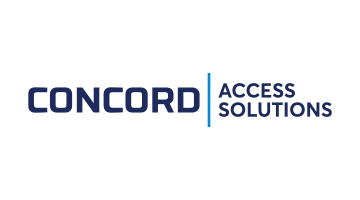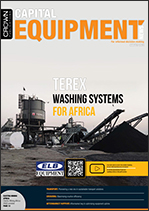 Terex washing systems for Africa
Terex washing systems for Africa
On the cover: A thirty-year partnership between Terex Washing Systems and multi-franchise distributor, ELB Equipment, has led to customers in southern Africa delivering some of the highest quality washed sand and aggregates for use in many of the country’s flagship infrastructure projects wherever speciality and higher strength concretes are preferred.
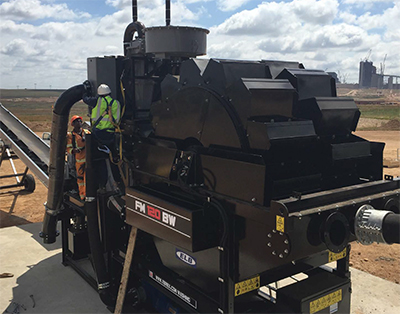 The advanced nature of Terex washing systems provides quarry and mine operators with the ability to efficiently separate waste products from saleable products and offer their customers a range of options to suit their construction requirements in all conditions and considering the regions’ varying geologies. This has made Terex solutions the first choice for sand and aggregate providers seeking to maximise quality without sacrificing quality. ELB Equipment’s extensive branch and dealer network through the southern African sub-region has also led to the proliferation of the plants across all corners wherever quality construction is a prerequisite.
The advanced nature of Terex washing systems provides quarry and mine operators with the ability to efficiently separate waste products from saleable products and offer their customers a range of options to suit their construction requirements in all conditions and considering the regions’ varying geologies. This has made Terex solutions the first choice for sand and aggregate providers seeking to maximise quality without sacrificing quality. ELB Equipment’s extensive branch and dealer network through the southern African sub-region has also led to the proliferation of the plants across all corners wherever quality construction is a prerequisite.
Minerals processing specialist and product manager for Terex Washing Systems at ELB Equipment, Heath Dickson, says centuries of mining South Africa’s rich resources has led to the depletion of many of the reserves, especially those that are close to the surface and easy to obtain.
For those in the sand and aggregates quarrying business this is especially true and experienced miners are quick to point out that there are few free dig areas left in the region. Aggregates and sands are mostly contaminated with fines, clay and or organic matter that require further processing before they can be brought to market.
“For concrete construction purposes, sand should have minimal fines smaller than 75 microns as these require more cement to bind. Above this threshold sand mixes can be optimised to customers’ requirements depending on the application. Most other wash plants battle to recover fines smaller than 500 microns which means aggregate suppliers can lose up to 30% of their saleable sand extracted. It also burdens water treatment plants that need to carry 30% more silt.”
Pioneering a new era in sustainable transport solutions
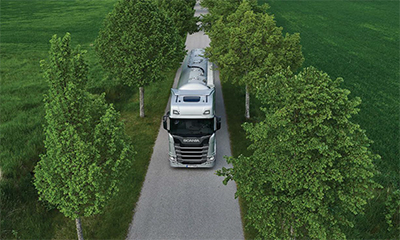 Over the next two decades, transport technology will change faster than any time since the industrial revolution. In place of trucks and buses powered by fossil fuels and internal combustion engines, transport technology will ultimately shift to electric vehicles.
Over the next two decades, transport technology will change faster than any time since the industrial revolution. In place of trucks and buses powered by fossil fuels and internal combustion engines, transport technology will ultimately shift to electric vehicles.
It’s a transition driven by climate change, regulatory changes to emission controls and a renewed understanding that transport mobility plays a crucial role in inclusive economic prosperity. For decades, Scania has been leading this shift. “We’ve set new standards for the transport industry through our advanced transport solutions that eliminate waste, while maximising the use of our advanced technological leadership,” says Erik Bergvall, managing director, Scania Southern Africa. “It’s about using less to deliver more”.
Sustainability is at the heart of Scania’s business philosophy. “Built into every one of our vehicles is our advanced technology that drives our sustainability goals,” explains Bergvall. “Starting with our lean modular manufacturing system, based on a fixed number of standardised interfaces, which allows for parts and components to be interchanged, our vehicles can be easily adapted to meet our customers' specific needs, while optimising their profit potential.” Lean components also extend to Scania’s vehicle engines. By keeping engines as lightweight as possible, customers benefit from optimised payload potentials, while never having to compromise on Scania’s legendary power outputs.
Electra Mining Africa 2022 preview
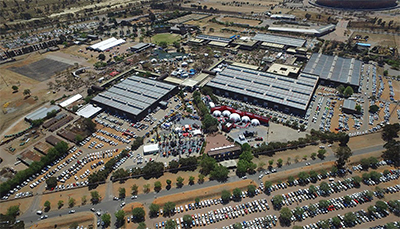 With over 25 000 m² floor space already sold and more than 550 confirmed exhibitors, this year’s Electra Mining Africa exhibition, which celebrates 50 years this year, having launched in 1972, is gearing up to welcome a host of local and international visitors.
With over 25 000 m² floor space already sold and more than 550 confirmed exhibitors, this year’s Electra Mining Africa exhibition, which celebrates 50 years this year, having launched in 1972, is gearing up to welcome a host of local and international visitors.
Trade show organiser and portfolio director Charlene Hefer from Specialised Exhibitions says that there is much anticipation and excitement around the restart of exhibitions and an eagerness to return to in-person, face-to-face business events.
Hefer cites Kai Hattendorf, CEO at UFI, the global association of the exhibition industry, who recently noted that this year is seeing the exhibition and business events industry busier than ever – “shows are back and calendars are tight.” He added that as business events drive the recovery and re-connection of industries, sectors, and economies, their importance cannot be underestimated. “We are anticipating a well-attended event from both an exhibitor and visitor perspective. At our recent Electra Mining Africa exhibitor briefing, we were thrilled to see so many exhibitors – both seasoned exhibitors and first-timers – in attendance,” she says.
The theme for this year’s show is: Make Connections That Matter.
Hefer notes that while networking is a great way to interact and exchange information, making a real connection offers much more.
“It’s the first step to building the enduring and beneficial relationships that will matter to your business, and your future. Electra Mining Africa offers the opportunity to build long-lasting connections that matter for buyers and sellers, and all industry stakeholders.”
Maximising crusher efficiency
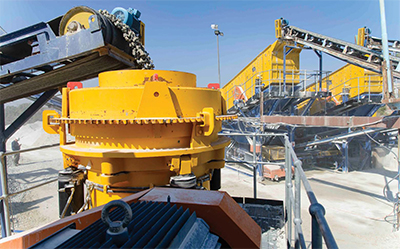 Knowing factors that affect a crusher’s efficiency can help operations improve their production rate. Speaking to Capital Equipment News, Theo Hendricks, product manager – comminution at Weir Minerals Africa, unpacks some of the key factors that affect the production efficiency of a crusher.
Knowing factors that affect a crusher’s efficiency can help operations improve their production rate. Speaking to Capital Equipment News, Theo Hendricks, product manager – comminution at Weir Minerals Africa, unpacks some of the key factors that affect the production efficiency of a crusher.
Crushing efficiency is key to production. Crushers, says Hendricks, form a vital part of the process flowsheet and are key to unlocking the valuable or sellable end product in the ore. Crushing is carried out to make the ore easier to handle between the different stages of the plant’s flow sheet. An inefficient crusher will therefore lead to an unbalanced plant.
“Crushing progressively reduces the particle size of the ore until the valuable mineral can be successfully extracted by the relevant beneficiation methods. Not getting the specific particle sizes within specification – especially in the quarrying industry – results in revenue loss,” he says.
There are several factors that affect crusher efficiency. Firstly, says Hendricks, it’s important to consider ore properties such as hardness/ bondwork index, abrasion index, crushability and clay content. Based on these properties, one will be able to select the right type of crusher and the relevant wear components that need to be installed in that particular crusher and application. For crushers, the most important wear item are the liners.
“Moisture content is another important factor to consider. Higher moisture content in the ore may cause stickiness, which in turn results in pegging. The more the material sticks on the liners, the less efficient the crushing process becomes,” he says.
Aftermarket key to optimising equipment uptime
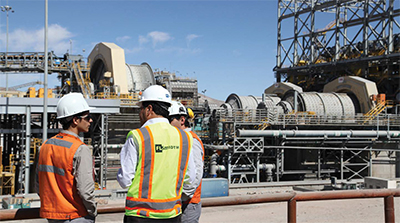 As cost pressures continue to bite, capital equipment owners have become more sensitive to the cost of downtime and low productivity. Consequently, one of the noticeable trends is the greater emphasis on reliable aftermarket support. To meet this growing demand, original equipment manufacturers (OEMs) and their dealer partners have in recent times scaled up their aftermarket regimes to help optimise equipment uptime and ensure successful customer operations.
As cost pressures continue to bite, capital equipment owners have become more sensitive to the cost of downtime and low productivity. Consequently, one of the noticeable trends is the greater emphasis on reliable aftermarket support. To meet this growing demand, original equipment manufacturers (OEMs) and their dealer partners have in recent times scaled up their aftermarket regimes to help optimise equipment uptime and ensure successful customer operations.
Of greater significance to capital equipment owners is the service delivered after the product has been supplied. Service ahead of product is not a new concept, but as the industry continues to evolve, its importance is gaining more focus.
According to Mark Baller, MD of Weba Chute Systems, plant efficiency and uptime are today more than ever the watchwords of modern industry. As equipment performance is reduced by age and wear, it can undermine smooth operations. Effective aftermarket services by OEMs, he says, are therefore vital to maintain the output and reliability of equipment.
“Indeed, these services are the cornerstone of the relationship between OEMs and their customers. At Weba Chute Systems, we see our aftermarket service as another opportunity to enhance the return on investment that the customer achieves from our technology. At the same time, our quality spares and professional services reinforce our business model, so that we are sustainable and always there for customers,” says Baller.
Marnus Koorts, GM pump products at Weir Minerals Africa, says aftermarket support is what drives value on site. The OEM’s ability to keep in-country stock allows customers to reduce their site stockholding, translating into reduced working capital.
Taking a TCO approach to capital equipment purchases
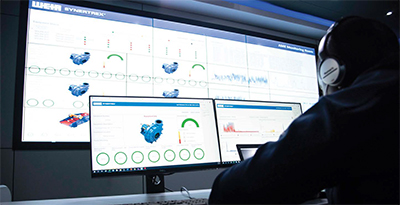 As businesses continue to grapple with the effects of the COVID-19 pandemic, the importance of considering total cost of ownership (TCO) in all procurement decisions cannot be emphasised enough.
As businesses continue to grapple with the effects of the COVID-19 pandemic, the importance of considering total cost of ownership (TCO) in all procurement decisions cannot be emphasised enough.
TCO is a well-established concept in many industries, but what does it really mean for capital equipment owners? According to Marnus Koorts, general manager pump products at Weir Minerals Africa, TCO is a true measure of the quality and performance of a part or a piece of equipment. “Traditionally, the focus has always been on the capital cost of a product,” he says. “The TCO concept takes a holistic view of the costs associated with the product, and for pumps typically includes cost of product, wear life of the product, energy consumption, downtime required (ease of maintenance) and water consumption.”
Koorts warns that mines that don’t apply this model could actually be costing their businesses a lot of money. It’s really important, he says, to have a holistic understanding of the buying decision. In the pump sector, for example, the cost of spares is always a big topic.
“Taking only product cost into account, one could fail to realise that Warman® impellers have a 2 to 3% lower energy consumption benefit compared to replicated components. If you take a 1 MW motor, for example, it can consume close to R10-million worth of power per year, translating to almost R300 000 power saving a year when opting for our offering. This does not even consider the cost of downtime and other maintenance related activities,” adds Koorts.
Charl Marais, sales manager at Pilot Crushtec International, believes that TCO should be one of the principal considerations for capital equipment owners when making capital purchase decisions or during a feasibility study for a contract proposal. It is an estimation of all the expenses related to owning and operating capital equipment in a specific application; adding a safety factor for unforeseen expenses and then attempting to determine a fair rate which makes jobs and operations profitable while covering costs.
The applications, features and evolution of the wheel loader
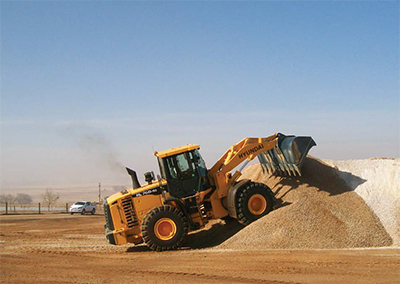 The wheel loader remains a trusted workhorse on the jobsite thanks to its heavy loading ability. These machines are, however, constantly evolving and becoming more versatile with new onboard technologies. This feature takes a closer look at these machines, their advantages and applications, as well as at some of the technologies they feature.
The wheel loader remains a trusted workhorse on the jobsite thanks to its heavy loading ability. These machines are, however, constantly evolving and becoming more versatile with new onboard technologies. This feature takes a closer look at these machines, their advantages and applications, as well as at some of the technologies they feature.
Discussing how the development of attachments has affected the versatility of the wheel loader, Anteneh Gebremeskel, product manager for wheel loaders at Volvo CE Region International, says Volvo Construction Equipment’s broad range of attachments makes it possible to tailor the wheel loader exactly for the application and conditions on a particular work site and to switch seamlessly between jobs. He says Volvo CE offers buckets for all types of jobs and materials including log grapples, material handling arms, and a long line of different fork attachments.
“Each attachment is of the same quality as the rest of the wheel loader and is designed as an integrated part of the machine. Their functions and properties are precisely matched to parameters such as link arm geometry and breakout, rim-pull, and lifting force,” he says.
Gebremeskel adds that the majority of Volvo wheel loaders feature TP-linkage, which combines high breakout torque and excellent parallel movement throughout the entire lifting range.
“This makes them a great all-rounder, suitable for pairing with a wide range of attachments such as buckets, forks, grapples and others.
“However, for customers who do not need that versatility and want their wheel loader for bucket applications only, Volvo CE also offers five Z-bar linkage models – L60Gz; L90Gz; L120Gz; L260H and L350H.”





